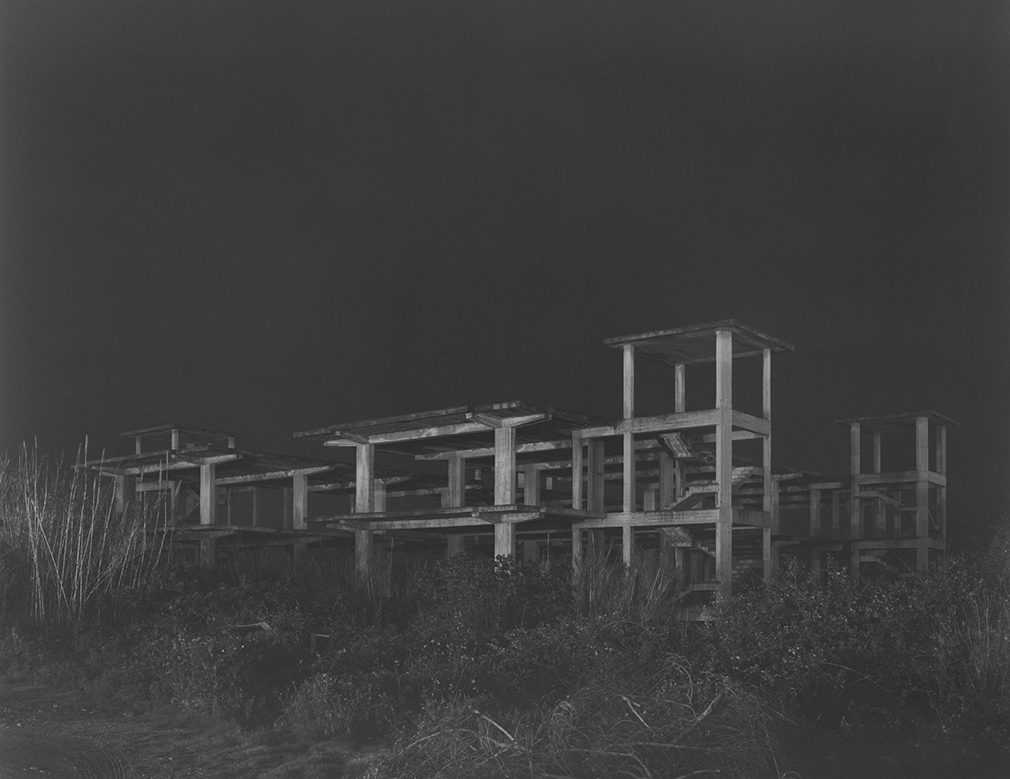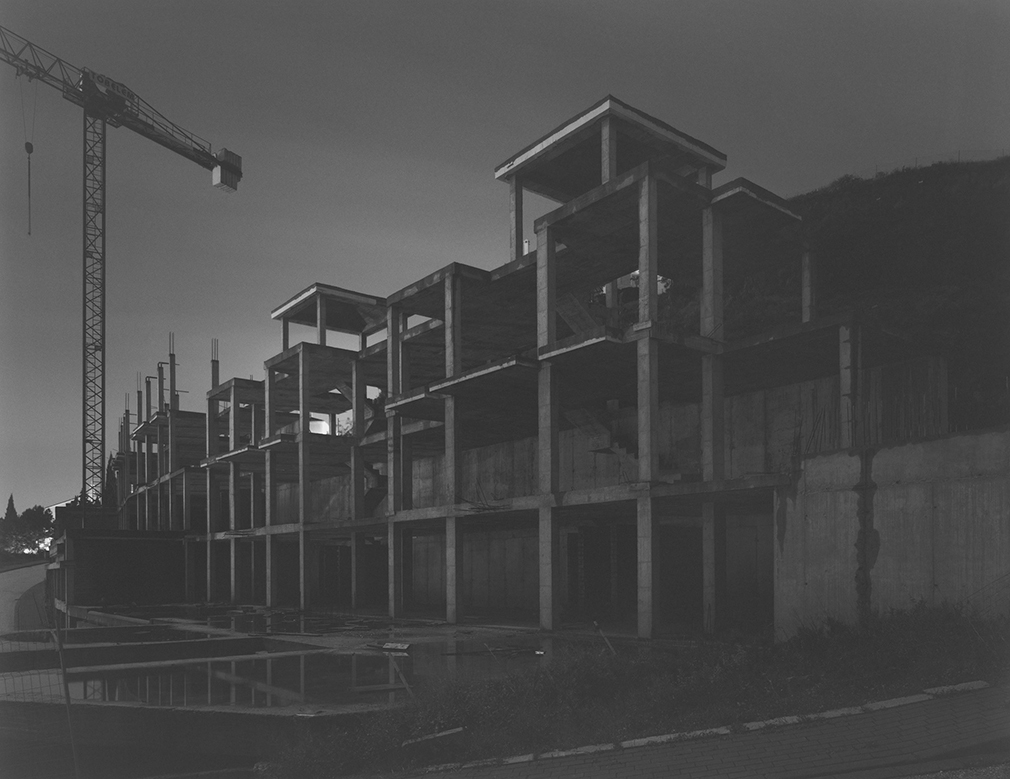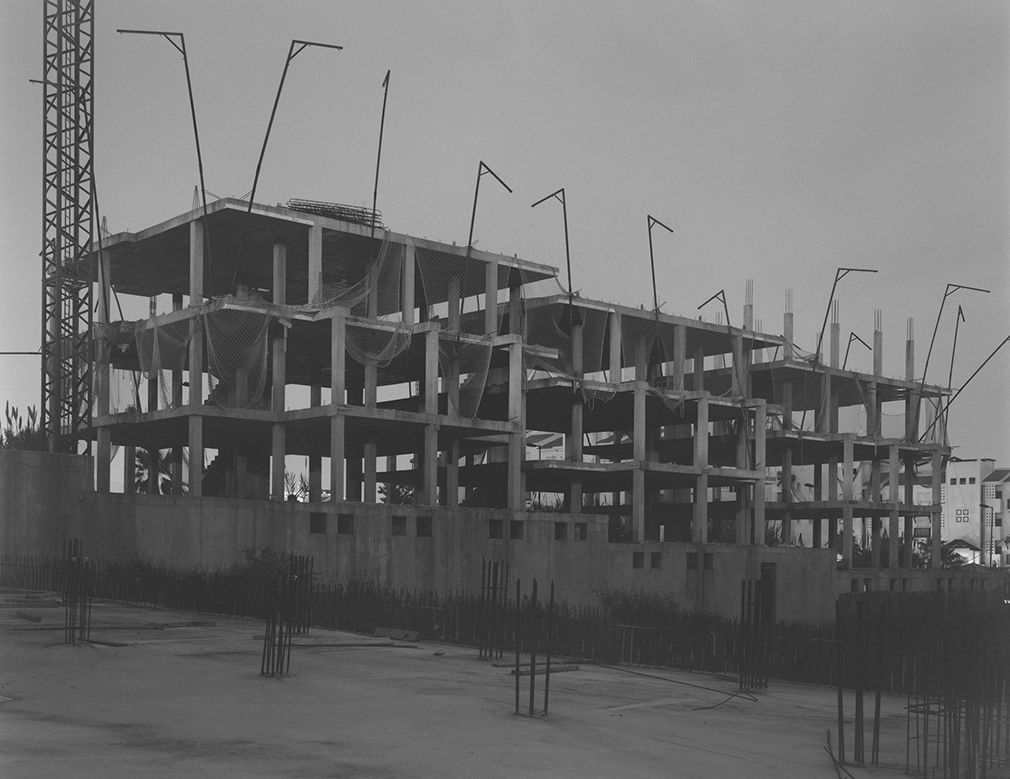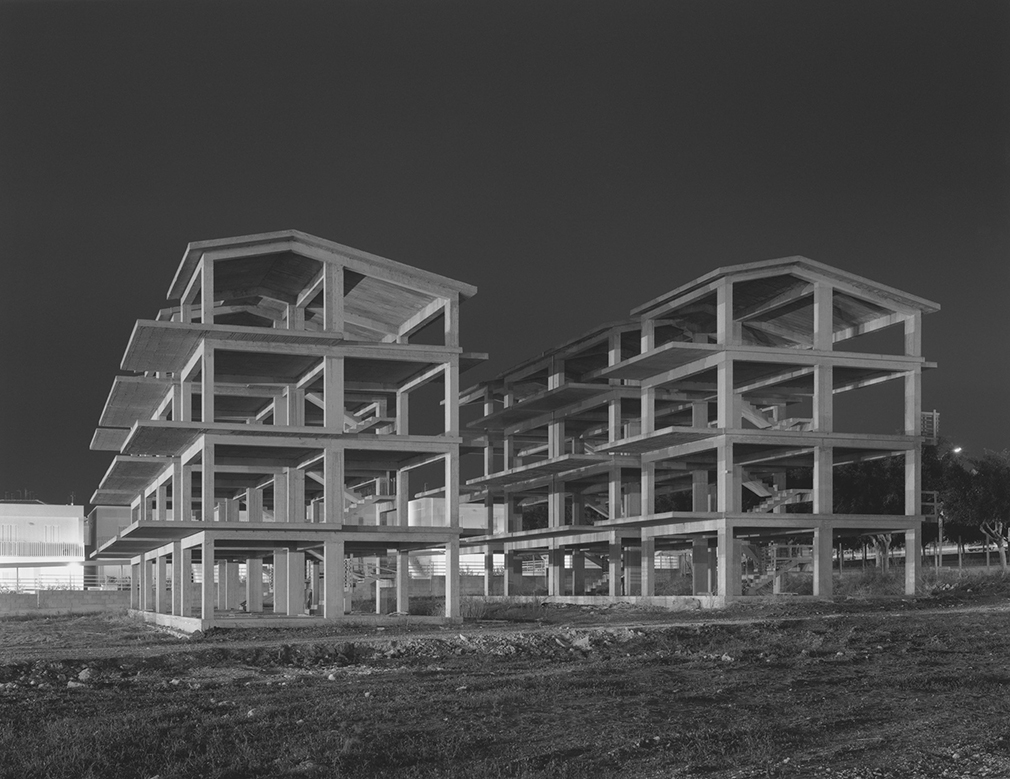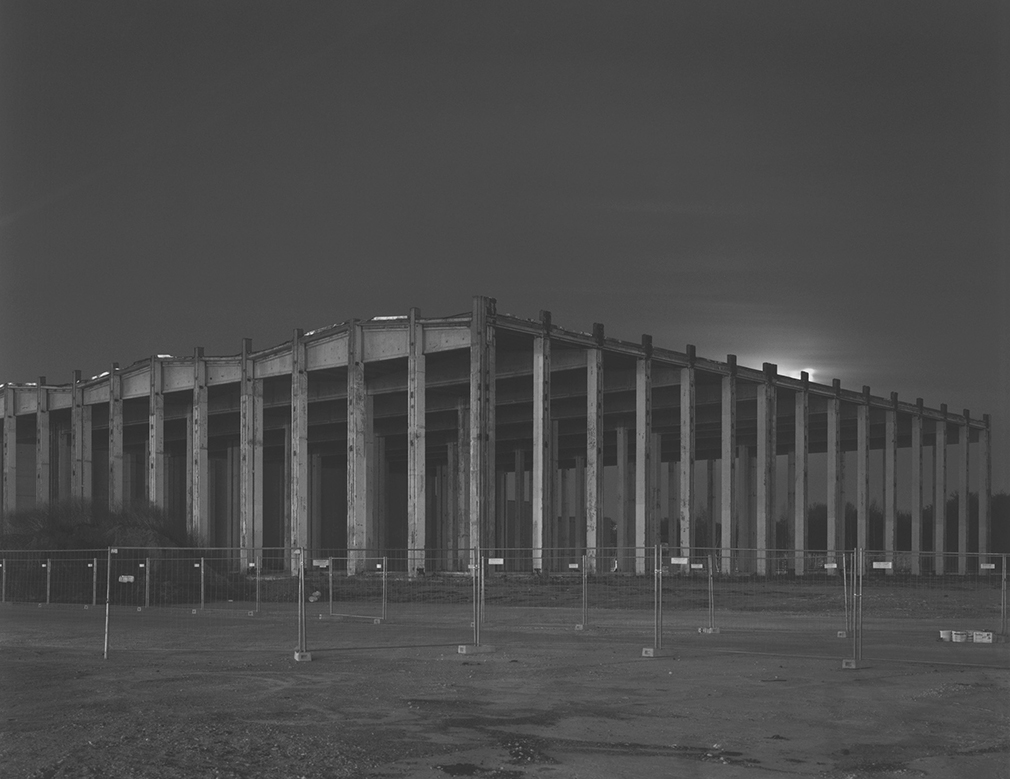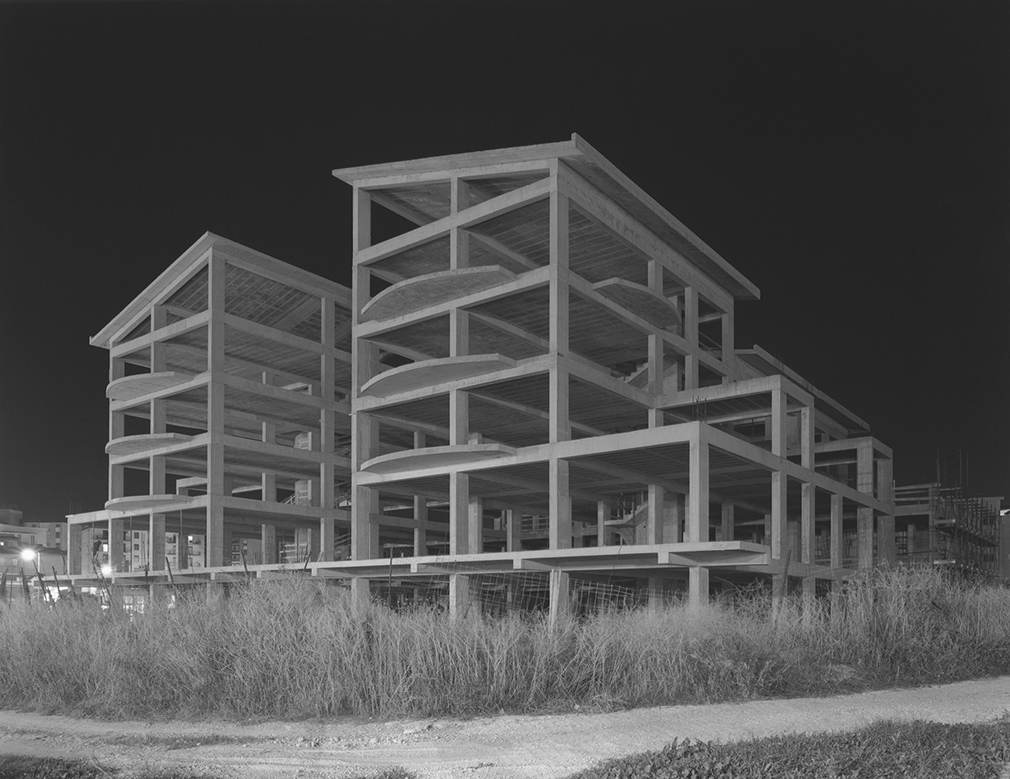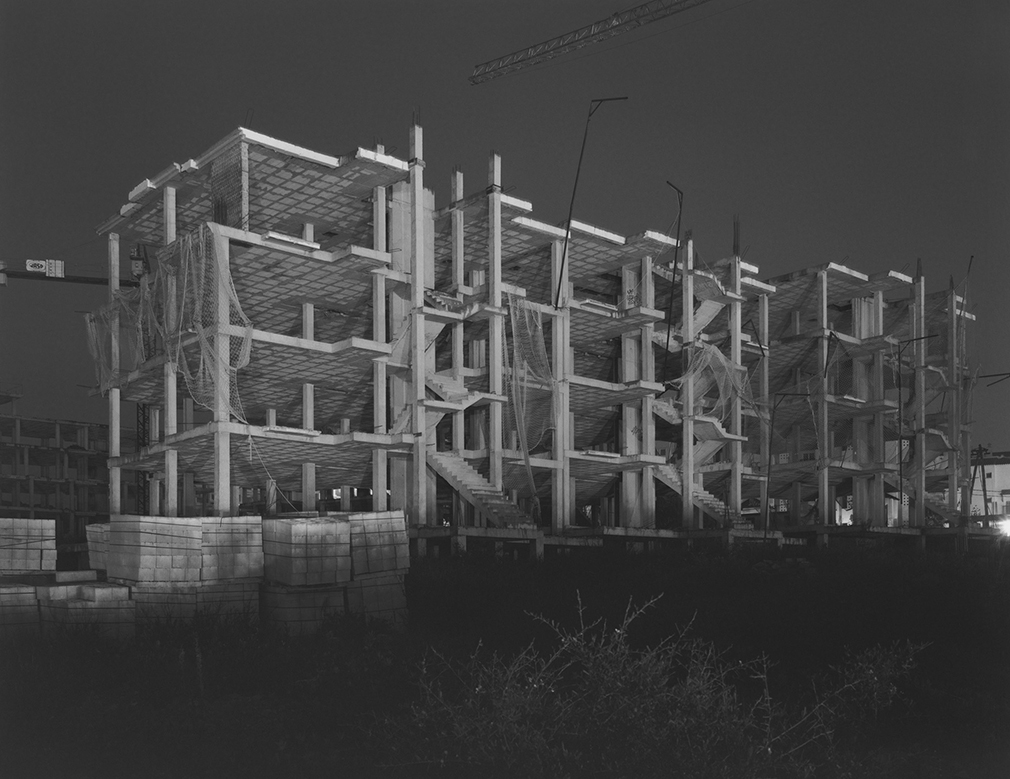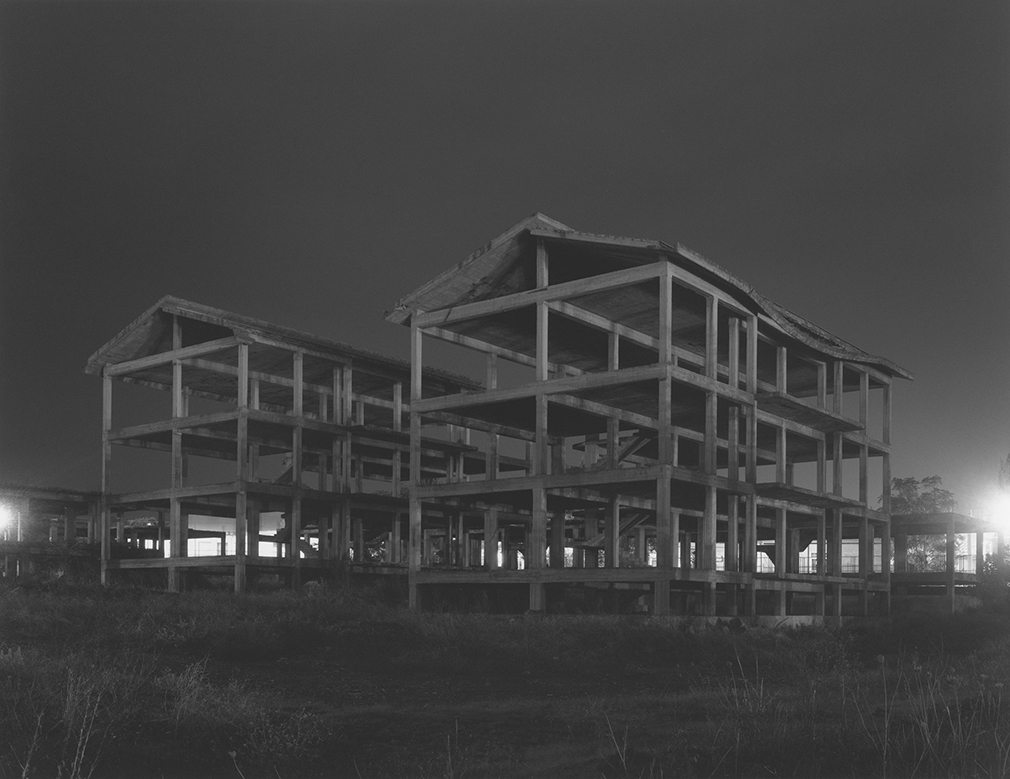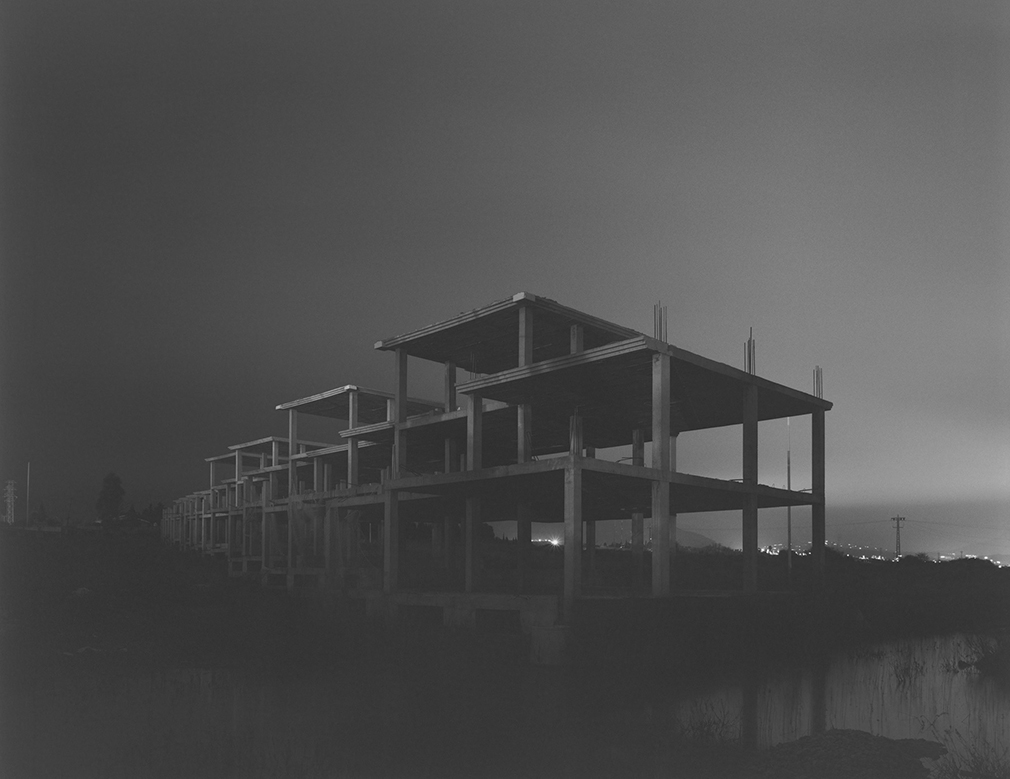Construction sites are good indicators of spatial dynamics. They are the physical manifestations of real estate development, fiscal systems, neighbourhood popularity, governmental planning, economic cycles and other processes. Often, these sites are part of longer-term developments.
But what if the conditions in which they are conceived change? For the series Frameworks, photographer Sam Laughlin captured unfinished structures in Italy, Spain, Britain and Germany, which represent spatial liminality – a stage between one state and another, a threshold to an unclear future.
When looking at the images, you see an ambiguous structural state that does not directly reveal the fate of the buildings. Some of the structures resemble Greek ruins, or simply look like a pile of concrete remnants, while others stand confident, waiting for their promised futures. In fact, most of the structures Laughlin photographed are ceased constructions. They are perhaps not yet architectural ruins, but instead the ruins of a collapsed political-economic system. Therefore they are modern ruins, or rather ruins of modernity, since modernity is largely founded on beliefs of progress and market economy. In that sense, Frameworks shows that trusting on never ending progress is naive, and expecting the market to fix everything is dangerous. The incentives created by both the market and political decisions are often perverse and can have unintended outcomes.
The title Frameworks is fitting for Laughlin’s series. It refers to the structures as blank canvases that could at one point be filled in with a programme and human activity. The question is whether their development will ever continue or whether the concrete compositions will be reduced to a pile of construction material again. If progress will pick up again, the canvases might be coloured in differently from how they were planned, open to a variety of possibilities. And what if you knew that these structures were on their way to become the ‘blandscapes’ of the contemporary city, would they still be as captivating?
In another way, Frameworks can refer to the way in which these ‘instant ruins’ are helplessly dependent on the economic, political and cultural frameworks of their time. Laughlin’s work is critical, as well as informative and poetic. Since the photographs were taken at night, they detach the buildings even more from their spatial and temporal contexts. Frameworks is an ongoing series that will be expanded in the near future.
All photographs are courtesy of Sam Laughlin.

